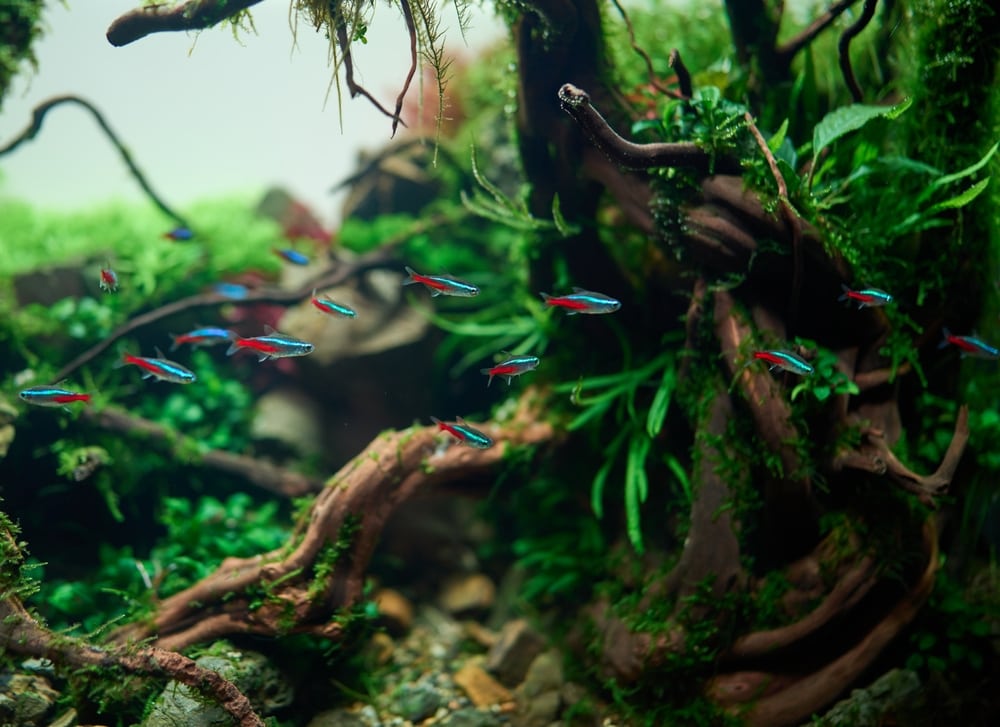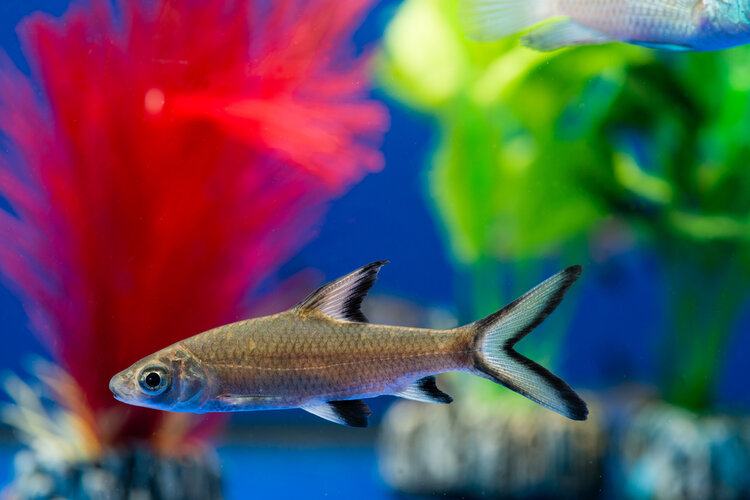Aquarium Spray Bar vs Nozzle: Which to Choose?

Updated on
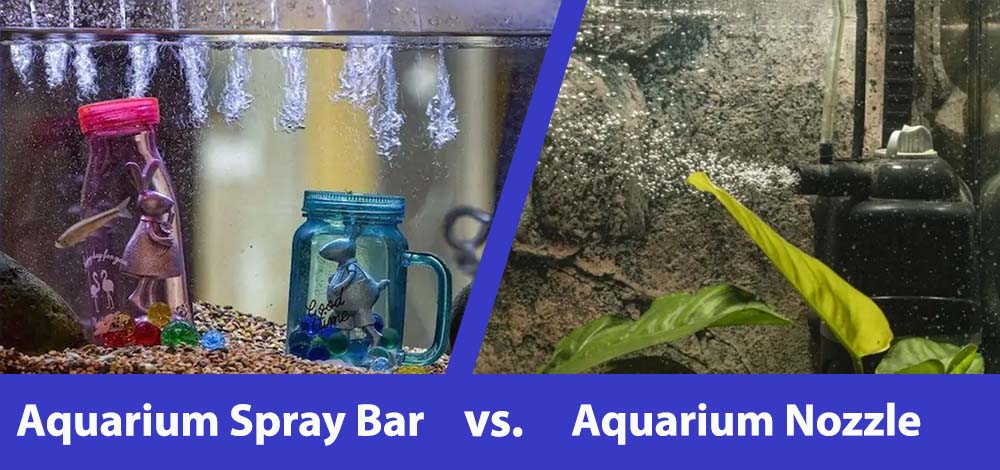
In terms of the health of both the fish and plants, as well as other inhabitants, you absolutely need filtration. Now, some sources will tell you that certain fish don’t require filtration, but the bottom line is that they are always better off with a filter than without.
One of the things to consider here is the output of your filtration unit. There are some options to go with here, including your classic nozzle or jet nozzle, as well as the spray bar. Of course, there are differences between the two, and each has its specific drawbacks and advantages.
This is why we are here right now doing this aquarium spray bar vs nozzle piece, to compare the two and help you make an informed decision on which one is best for you and your aquarium setup.
Aquarium Nozzle
Okay, so one of the most common ways to get the water back into the fish tank after filtration is using the classic nozzle. It’s just a little piece with a nozzle located at the front, which attaches to the filter’s clean water outtake tube.
It sprays the water back into the tank using a nozzle. Now, depending on the type and strength of filter you have, a nozzle will create quite a bit of water movement in the spot where the water enters the fish tank.
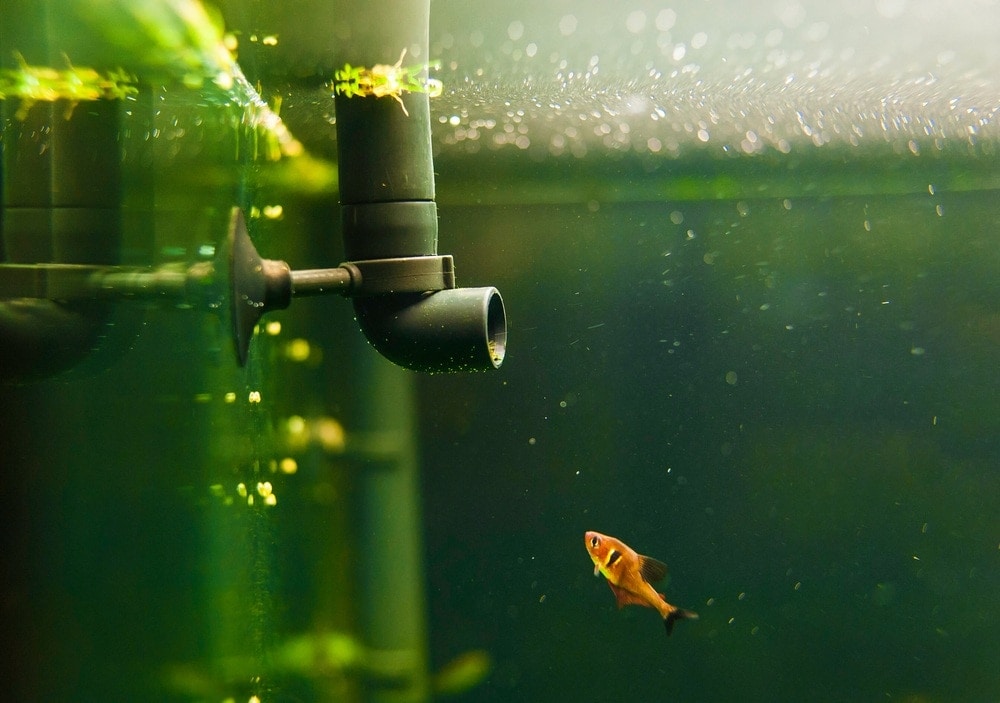
Installation/Mounting
Nozzles are commonly used with canister filters but can also be used with submersible filters, power filters, and other types of filters. They tend to be very easy to install.
Benefits & Drawbacks
Keep in mind that nozzles are not the best when it comes to creating water oxygenation or for tanks that do not do well with a lot of water movement. However, they are very easy to use and install. On the other hand, these things are good if you need a lot of water flow going to a certain area of the fish tank.
Many people like to use nozzles because they are very convenient. Simply attach the nozzle to the outtake tube, place the nozzle in or above the tank, and you are good to go. One big advantage of using a nozzle is that you can accurately direct the water flow in whichever direction you see fit. Some even come with dual output heads so you can direct the nozzle in multiple directions.
- Very cost-effective
- Extremely easy to use
- Allows you to direct the water flow in any given direction
- Good for creating water movement
- Excellent for high-efficiency or high-capacity filters
- Not great for tanks that cannot handle lots of water movement
- Not ideal for use with HOB, submersible, or power filters
- Do not really create any water aeration or oxygenation
Aquarium Spray Bar
The other good option to go with is a spray bar. If you are having trouble picturing it, just think of one of those garden and lawn sprinklers that has a long bar covered in little holes where the water comes out in little streams.
This is the same principle but for an aquarium filter. The water comes from the filter’s outtake tube, but instead of coming out through a nozzle, it comes out of a bunch of little holes in a bar, which is why it is called a spray bar.
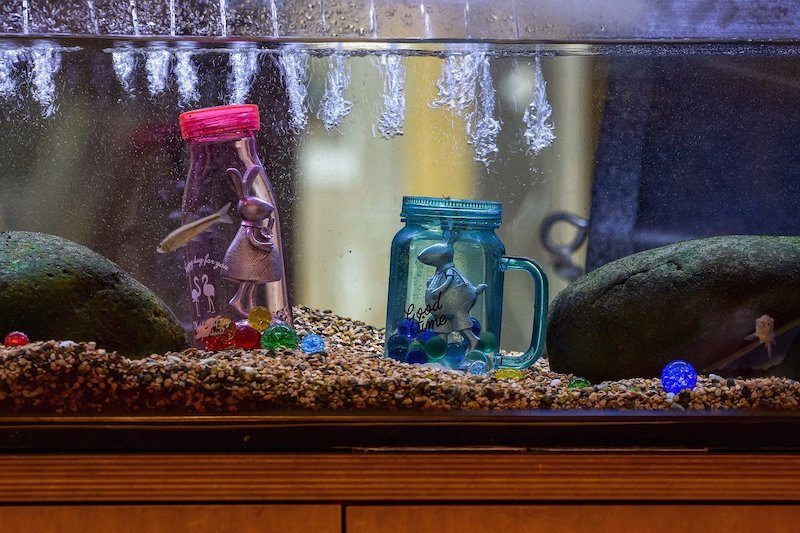
Mounting/Installation
Now, spray bars can be a bit harder to install, as they generally have to be mounted on the rim of an aquarium. They can, on occasion, be used while submerged, but it is not recommended; plus, mounting a spray bay under the water is never easy either. Generally speaking, most power and HOB filters will come with spray bars as opposed to nozzles, whereas canister filters usually come with nozzles.
Therefore, if you get a filter with an included spray bar, such as a HOB power filter, then life is really easy, but connecting a spray bar to a canister filter and then mounting it on the rim of your tank, can be a bit of a challenge.
Benefits
Spray bars do have some benefits. One of these benefits is that you can spread out the water that is coming out of the filter. In other words, instead of a high-velocity jet of water coming out of a nozzle, the water is distributed into a bunch of smaller streams with a lower velocity.
Therefore, the spray bar is a good option to go with for tanks that cannot handle a high amount of water flow or heavy currents. On a side note, the fact that the returning water is spread out also helps to stop dead spots from occurring in the water and may assist with nutrient dispersal as well.
The other big benefit that spray bars come with is water agitation, especially near the surface. This means that when they spray the water into the tank, they also force a whole lot of oxygen and air bubbles into the tank. This is a good thing if your fish tank is heavily stocked and has comparably low oxygen levels.
If you need more oxygen flowing through the water in your tank, a spray bar is undoubtedly the way to go. However, if you don’t really care about oxygenation and you need some good water movement, then a spray bar is not the way to go.
- Easy to use with HOB/power filters
- Great for water oxygenation & aeration
- Good for tanks that cannot handle a strong water current
- Generally does not require much maintenance
- Prevents dead spots and helps spread nutrients
- Can be hard to mount and install, especially with something like a canister filter
- Not great for tanks that need a lot of water flow
- Generally are not that durable and can clog easily
Final Thoughts
The bottom line here is that both nozzles and spray bars have their advantages and their drawbacks. The nozzle is good for something like a canister filter; it is very easy to use, allows you to change the water direction, and is good for tanks that can handle higher water flow rates.
On the other hand, the spray bar is better for water oxygenation, preventing dead spots, spreading nutrients, and they are great if you have a HOB or power filter. In terms of quality, the differences here will stem mostly from the price and brand name of the specific unit in question.
Featured Image Credit: (R) Lapis2380, Shutterstock. (L) Pixabay



